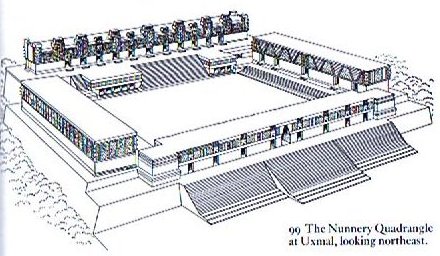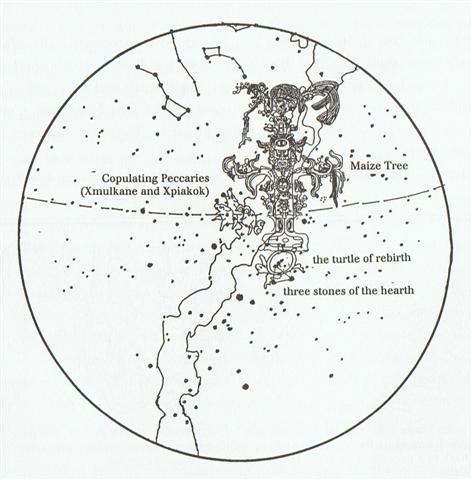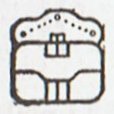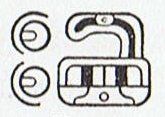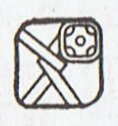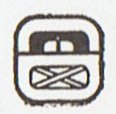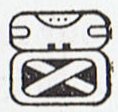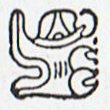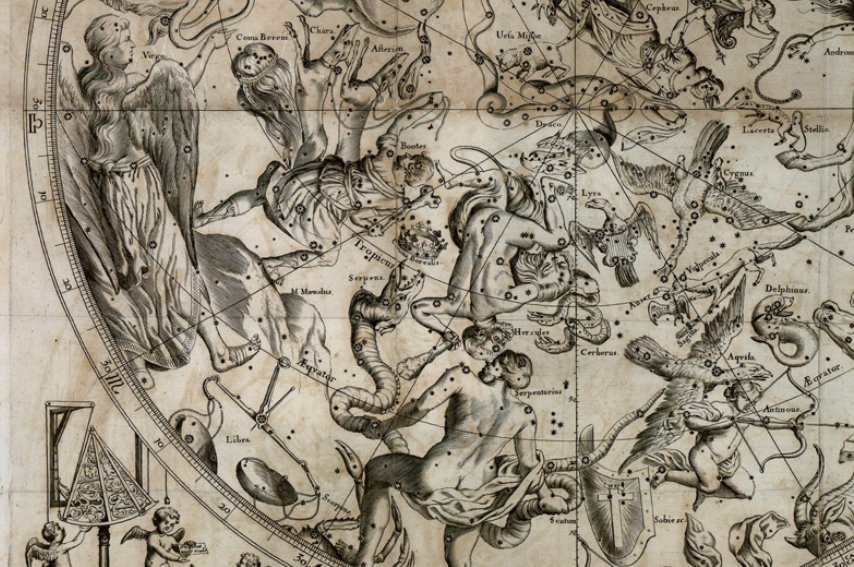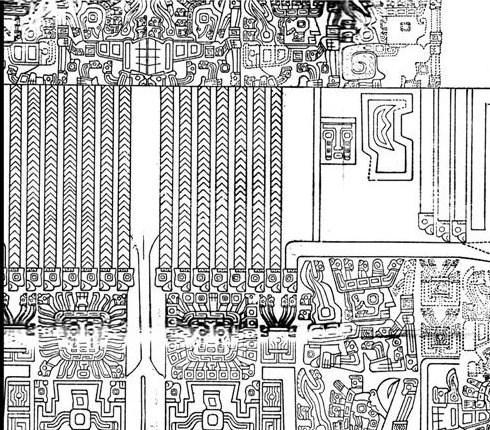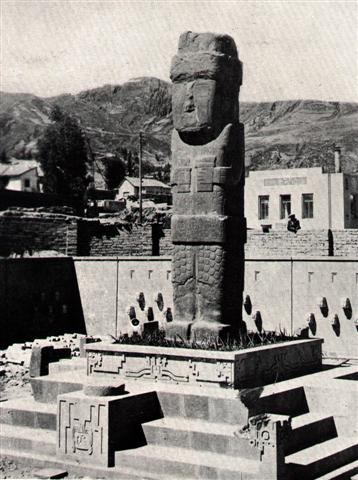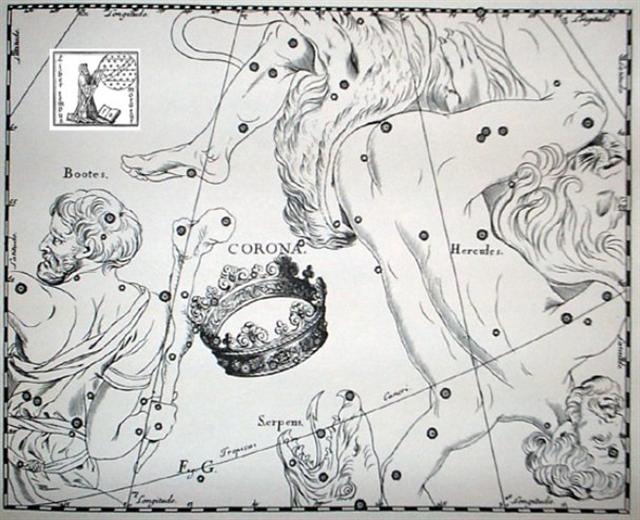The C tablet has significantly more glyphs on side a than on side b and the reason seems to be a wish to let the text on the front side of the tablet run not only for a year but from nakshatra Acrux to heliacal Hamal. 392 (glyphs on side a) = 183 (from heliacal to nakshatra) + 209 = 183 + 27 (Ca2-1) + 182 = 365 + 27. Or rather a wish to go from JULY 22 (written as 22 / 7 = π) to 229 (AUGUST 17). 203 (JULY 22) + 391 (= 594) = 22 * 27 (= 365 + 229). The number of glyphs on side a of the G tablet was also 229 - as in the number of days from heliacal Atlas in day 135 (= 5 * 27) to its midnight culmination in December 30.
The First Point of Aries (Sheratan) is here not depicted as a vaha mea 'fish' standing straight up with an open red mouth (as in Gb7-25, where 72 * 5 = 360), but the text is rather oriented towards the end of the year, with a pair of manu kake 'climbing birds' hanging with their heads down as if exhausted. If FEBRUARY here should be regarded as the 14th month rather than as the 2nd, then 14 * 26 = 364 should signify the end of a year which had begun at heliacal Sheratan. Both the heliacal and the nakshatra day numbers for October are in my table above equal to the nakshatra day numbers for AUGUST, which my tool based on colours assigned for the planets quickly reveals:
The synodic cycle of Jupiter (Father Light) was not exactly 399 days but slightly less, viz. 398.88 days. Perhaps the creator of the C text reflected upon this fact (and also upon the similar 583.92 which was not exactly lÝke the ideal 584 (= 8 * 73) days for the cycle of Venus). He could then have decided to create a complicated glyph alluding to these fractions. My chosen symbol here could then stand for the difference between the exact cycles and the ideal cycles: ۞
In Cb1-6 it looks as if the Tree (rakau) of Jupiter in a final effort was breaking through the dry and hard (maro) surface (carapace) of Mother Earth thought of as a Turtle (honu):
... An iconographic study by Jeff Kowalski suggests a cosmological layout for the Nunnery. The higher placement of the North Building, with its 13 exterior doorways (reflecting the 13 layers of heaven), and the celestial serpents surmounting the huts identify it with the celestial sphere. The iconography of the West Building, with 7 exterior doorways (7 is the mystic number of the earth's surface), and figures of Pawahtun - the earth god as a turtle - indicate this to be the Middleworld, the place of the sun's descent into the Underworld.
The East Building has mosaic elements reflecting the old war cult of Teotihuacan, where tradition had it that the sun was born; thus, this may also be Middleworld, the place of the rising sun. Finally, the South Building has 9 exterior doorways (the Underworld or Xibalba had 9 layers), and has the lowest placement in the compex; it thus seems to be associated with death and the nether regions ...
... I already knew that the ceiba tree was the model for the sacred World Tree of the Maya, but I had never seen one in flower when I knew what I was looking at. I was really excited because normally you can't see the blossoms even if you're there when the tree is in blossom. The fully mature trees are hundreds of feet high. and the blossoms are very small. 'It's a ceiba', I chirped and began looking for a branch low enough to see one of the blossoms up close. Joyce Livingstone, a retired teacher, did the logical thing. She bent over, picked up a fallen branch, and held it out for me to see. I was too excited and full of myself to listen. She tapped my arm more insistently and still I didn't hear her. Finally, in frustration, she grabbed my wrist and raised her voice. 'Will you look at these?' she said, waving the branch, and finally I did. What I saw stunned me, for in her hand lay a perfect replica of the earflares worn by the Classic Maya kings. Suddenly I understood the full symbolism of so many of the things I had been studying for years. The kings dressed themselves as the Wakah-Chan tree, although at the time I didn't know it was also the Milky Way. The tzuk [partition] head on the trunk of the tree covered their loins. The branches with their white flowers bent down along their thighs, the double-headed ecliptic snake rested in their arms, and the great bird Itzam-Yeh stood on their head. I already knew as I stood under the young tree in Tikal that the kings were the human embodiment of the ceiba as the central axis of the world. As I stood there gazing at the flowers in Joyce's hand, I also learned that the kings embodied the ceiba at the moment it flowers to yield the sak-nik-nal, the 'white flowers', that are the souls of human beings. As the trees flowers to reproduce itself, so the kings flowered to reproduce the world ...
Above this Mayan 'turtle of rebirth' there is a quincunx sign and this resembles their Kayab turtle, 260 (= 13 * 20) days after Zotz and beginning with day 321 (= 3 * 107):
In our own more well known picture gallery we will find a corresponding place after Spica (representing Virgo or Mother Earth as a Virgin), with Bootes (represented by Arcturus) climbing up from that part of Mother Earth which was named Mons Menalus: ... Mons Maenalus, at the feet of Bo÷tes, was formed by Hevelius, and published in his Firmamentum Sobiescianum; this title coinciding with those of neighboring stellar groups bearing Arcadian names. It is sometimes, although incorrectly, given as Mons Menelaus, - perhaps, as Smyth suggested, after the Alexandrian astronomer referred to by Ptolemy and Plutarch. The Germans know it as the Berg Menalus; and the Italians as Menalo. Landseer has a striking representation of the Husbandsman, as he styles Bo÷tes, with sickle and staff, standing on this constellation figure. A possible explanation of its origin may be found in what Hewitt writes in his Essays on the Ruling Races of Prehistoric Times: The Sun-god thence climbed up the mother-mountain of the Kushika race as the constellation Hercules, who is depicted in the old traditional pictorial astronomy as climbing painfully up the hill to reach the constellation of the Tortoise, now called Lyra, and thus attain the polar star Vega, which was the polar star from 10000 to 8000 B.C. May not this modern companion constellation, Mons Maenalus, be from a recollection of this early Hindu conception of our Hercules transferred to the adjacent Bootes?
The Babylonian ecliptic path ended at Spica whereas the Chinese list was beginning with Spica. The front side of the tablet should ideally end with Spica and the back side ideally begin with Spica.
Clearly my interpretation makes sense.
And now we can even guess what the numbers in the tresses of Pacha-mama meant:
... Religion then, as among other peoples of the continent, was an animism based on cosmic philosophy, in which all the phenomena of nature and all visible things which had a relation with material life, were animated. The ground, the food-giving earth, was Pachamama; the moon, Paximama; the lake, Kochomama. Even the wind was a divine being, Huayra-huirakjocha. The hills and especially the volcanos were also considered to be divinities and were called Achachilas. [A footnote explains achachi as grandfather] ...
... In other words, the ancient Druidic religion based on the oak-cult will be swept away by Christianity and the door - the god Llyr - will languish forgotten in the Castle of Arianrhod, the Corona Borealis. This helps us to understand the relationship at Rome of Janus and the White Goddess Cardea who is ... the Goddess of Hinges who came to Rome from Alba Longa. She was the hinge on which the year swung - the ancient Latin, not the Etruscan year - and her importance as such is recorded in the Latin adjective cardinalis - as we say in English 'of cardinal importance - which was also applied to the four main winds; for winds were considered as under the sole direction of the Great Goddess until Classical times ... |
|||||||||||||||||||||||||||||||||||||||||||||||||||||||||||||||||||||||||||||||||||||||||||||||||||||||||||||||||||||||||||||||||||||||||||||||||||||||||||||||||||||||||||||||||||||||||||||||||||||||||||||||||||||||||||||||||||||||||||||||||||||||||||||||||||||||||||||||||||||||||||||||||||||||||||||||||||||||||||||||||||||||||||||||||||||||||||||||||||||||||||||||||||||||||||||||||||||||||||||||||||||||||||||||||||||||||||||||||||||||||||||||||||||||||||||||||||||||||||||||||||||||||||||||||||||||||||||||||||||||||||||||||||||||||||||||||||||||||||||||||||||||||||||||||||||||||||||||||||||||||||||||||||||||||||||||||















